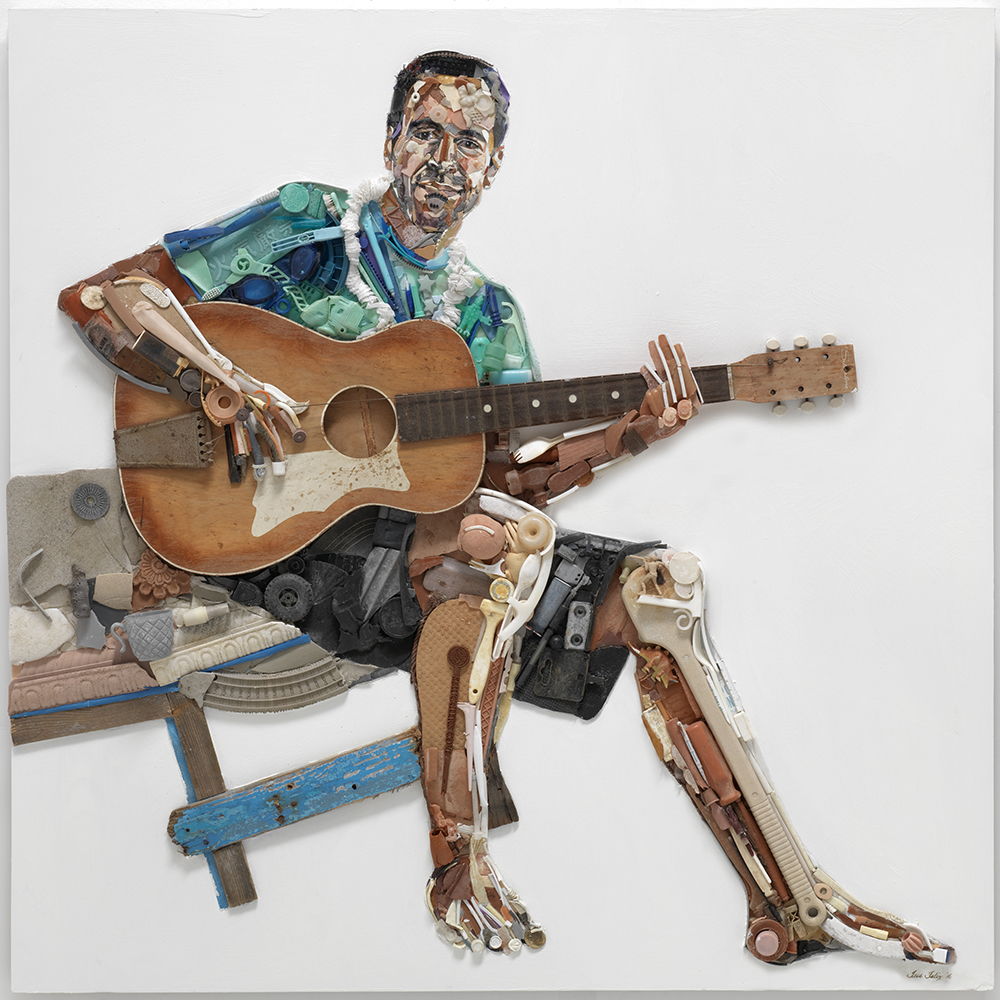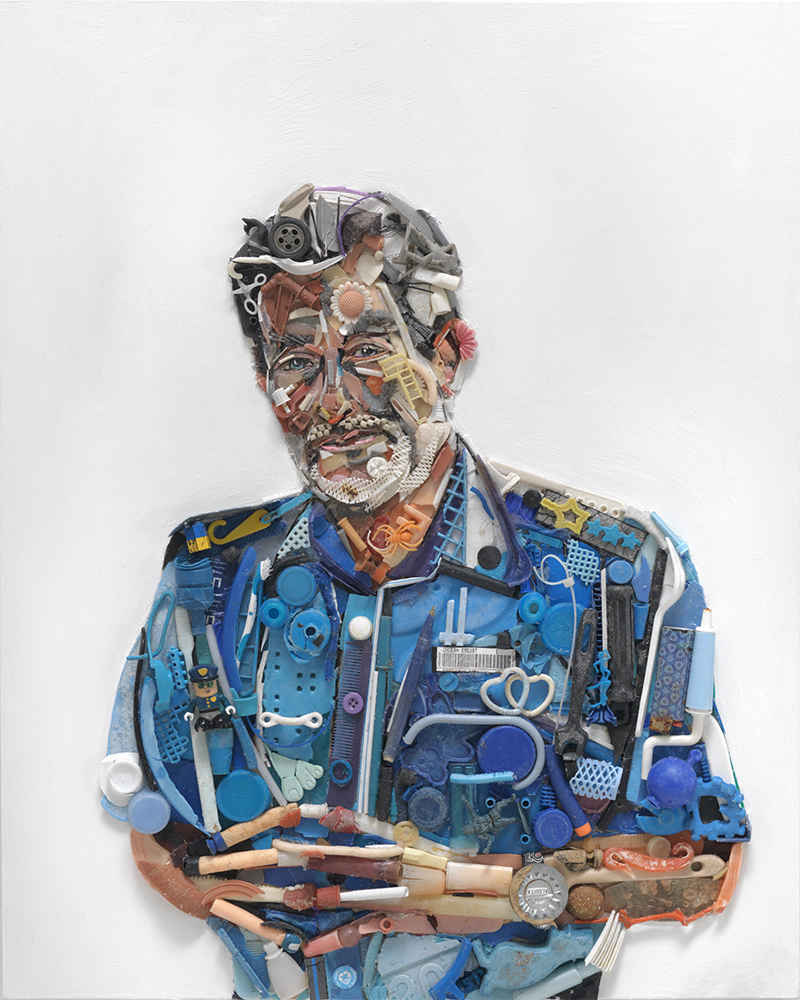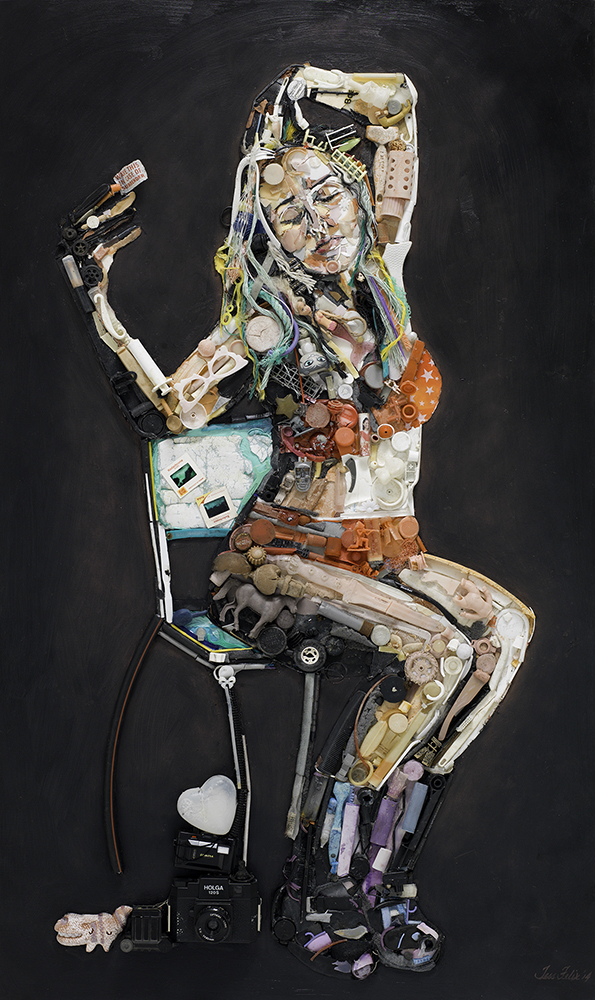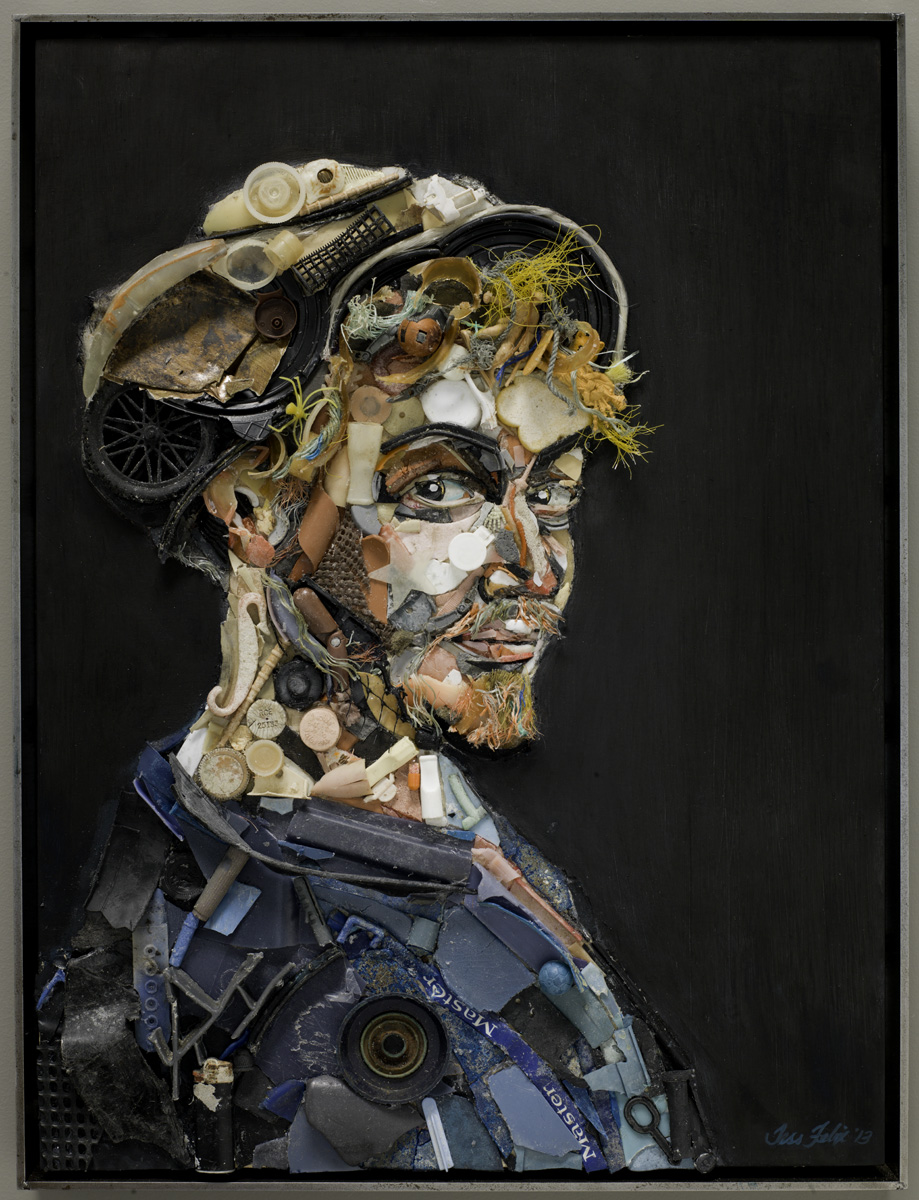Tess Felix uses colorful bits of ocean debris to create playful, mosaic portraits of thought leaders and activists in the marine plastics space. Her work employs humor to tell a serious story of our plastic consumption and its effect on our oceans. Tess shares experiences that influenced her work and the conversations and actions she hopes to inspire through her art.
What’s your background as an artist, and how would you describe your style?
Art has always been a central focus in my life. I was raised by artists. My father was a graphic designer and my mother was a hair stylist and also expressed her creativity in the way she lived her life and the world she created for us. Together, my parents created beautiful environments in all the houses we lived in growing up, from England to Belgium and California. We never had much money but we always had art supplies; Christmas and birthday presents were always art supplies.
My father took on the role as our art instructor and took his responsibility very seriously. He would set up still lifes on the dining table and have us sit down and draw it, then he’d do critiques of our work. Through all the torture of being forced to draw, we learned to ‘see.’ This was one of his greatest gifts to me.
I never went to art school, but I do take classes here and there in subjects that interest me. I have studied life drawing, sculpting the human figure, and painting techniques of the Old Masters. As a young adult, I became a hairdresser and makeup artist for the performing arts. This is something I still do today along with my marine plastic portraits and other creative endeavors.

What ignited your mission to raise awareness through your art? Is there a particular moment or realization that inspired you to focus on the relationship between natural and built environments?
I live in the town of Stinson Beach, twenty miles north of the Golden Gate Bridge. Stinson is a relatively clean beach to the untrained eye. After a horrendous storm in 2010, the beach was bombarded with billions of brightly colored plastic bits of garbage that had been swept in. The entire length of the four-mile beach looked like a colorful mosaic. That inspired me to collect a few buckets of plastic and take it home to create a picture with the colorful plastics as a palett.
After this astonishing sight, I began to investigate ocean plastics which led me to the leading educators and activists on the subject. The first two whose work I became acquainted with were Captain Charles Moore and Chris Jordan. This led me to seek out more information and I discovered the work of others in the field. I decided to create a series of portraits featuring my Ocean Heroes to honor their work. This series is still ‘active’ today as I encounter other thought leaders who inspire me. I hope, through this series, to encourage viewers to investigate the people I portray so that they too can learn and perhaps be inspired to make changes in their own lives based on knowledge gained around marine plastic pollution.

Talk us through your artistic process for one of your pieces. What challenges are you presented with by using unique materials?
I collect plastics off of the beaches and have local and far away friends supply me with their findings from around the world. I begin by washing the pieces and sorting by color. I have a very small studio, so most of the plastic is left outside in the rain and sun, wind and fog. I have to re-wash and sort it constantly. This can feel tedious and time-consuming.
I begin a portrait by taking a photograph of the sitter. This allows me time to get to know the person. I observe their personality, the way they move, their subtle nuances. I get the chance to ask them about themselves and find out what interests them. This plays a role in the items I choose to add to their portrait.
From the photo session, I choose a picture and copy a pencil outline of the subject on a wood board or canvas. Then I follow the highlights and shadow, shades and hues, using a myriad of items and plastic shards to create depth and form. I will run out of a color and have to use another shade to continue. I’m constantly being forced to make hundreds of tiny decisions as I go along. It’s most like doing a puzzle but no two pieces fit together. Size, color, shape, item, all have to come together to create one whole picture. I use a marine silicone to adhere the plastics. This is a difficult and toxic product that I’d like to replace with a different product that works as well. Yet to be discovered.

What role does humor play in your work?
I add small things to the portraits that only I know about that humor me. I like my art to express an aspect of the sitter’s sensuality. You can examine my portraits closely and find little stories if you look long enough. Every portrait has a secret quote from the sitter written on the canvas behind the plastics. This secret message is something I think about for the sitter as I create their portrait. It’s another thread that connects me to the person I’m portraying.

What reaction would you like people to have to your work – and what do you want them to take away from it?
Looking at the details of a portrait, one will invariably see an item that is familiar to them; they are made primarily of things from our daily lives. If this recognition inspires curiosity or sparks a conversation about art or pollution, that is enough. If they take an additional step and change a plastic habit, such as never using single use plastic again, then all the better. Each portrait, in its largest sense, is a reflection of the viewer and their time on this planet. The message is in plain site.
Follow Tess on Instagram.
